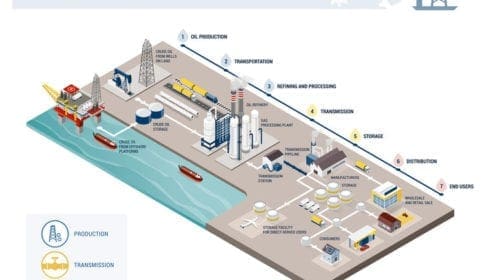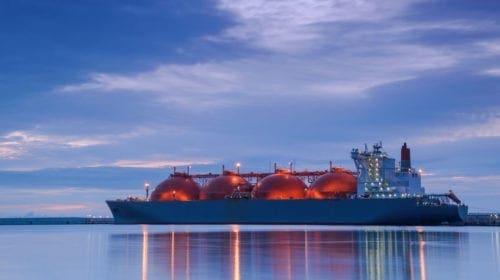Find out what the buzz is all about surrounding the IMO 2020 low-sulfur marine fuel regulation in The Beehive State.
An editorial published in the Standard-Examiner, titled “For states like Utah, IMO 2020’s new regulations can’t come fast enough”, discussed the operational advantages of refining operations in Utah and how the state is well positioned for IMO 2020. While the author makes strong points about the efficiency of the local refining industry, its collective ability to produce low-sulfur fuels, and the ability to source crude locally, there is a “leap of faith” to tie in directly with the global marketplace for compliant IMO 2020 fuel.
Assessing the Advantages
The first critical advantage that local refiners in Utah have is more than “$100 billion in refining investments” over the years. Marathon completed an expansion of its Salt Lake City Refinery in 2015 to process more Utah waxy crude, which has less sulfur. Silver Eagle’s infrastructure also allows for similar processing of waxy crudes from the local area. Each of the other main refiners (HollyFrontier and Chevron) share similar stories on their respective websites.
A second critical advantage in PADD 4 Mountain States Region is the ability to maintain low costs, both for fuel and for feedstock. Fuel costs are low as a result of an abundance of natural gas. Also, as the article states, Utah exports power thereby keeping electricity prices low. Low fuel is undoubtedly a great advantage. The source of cheap supply is also critical. Local crude grades provide feedstocks with relatively low sulfur. The result of these advantages is the ability to create fuels that exceed the mandated low-sulfur limits for complying with IMO 2020.
Is this enough to maintain a sustained competitive advantage?
While these refiners had the foresight to invest in infrastructure to produce lower-sulfur fuel, they’re not alone. According to Reuters, “Most U.S. Gulf Coast refiners are able to process heavy crudes used to make IMO-compliant fuels and have spent this [past] year refurbishing distillation units and cokers to process cheaper, heavier grades.”
Motiva, the nation’s largest refiner, overhauled its Port Arthur, Texas refinery to produce compliant fuels. PBF Energy completed the refurbishment of an idled coker at its Chalmette Refinery in Louisiana for the same purposes. Looking West, Long Beach also has refineries with coking capabilities (PBF, Valero and Marathon) are poised to participate in this market. Likewise, nestled in the heart of busy shipping lanes, Limetree Bay Refining in St. Croix, U.S. Virgin Islands is restarting operations (including a coker) as well.
Crude Diet: It’s More Than Just Appetite
So, unable to compete on just infrastructure, let’s turn our attention to sourcing cheap crude. It’s true that location matters. Utah’s refineries enjoy proximity to stable production of lighter crudes with less sulfur content. If U.S. Gulf Coast, West Coast, East Coast and Caribbean refineries lacked infrastructure to process heavy crudes for IMO-compliant fuel, then Utah would have the upper hand. However, that advantage falls flat against historically cheaper heavy crudes sourced to refineries that can process those crudes.
Utah will benefit only when the heavy crude discount narrows such that it doesn’t provide a long-term competitive advantage for the other refiners. Market volatility, according to Reuters, has contributed to tightening of the discount once enjoyed by the abundance of heavy crude. Taking all this into consideration, operational efficiency and strength of long-term supply options will dictate advantages in the future for sourcing crude to produce IMO-compliant fuel.
The editorial commented that, “growing interest in Utah’s high-quality fuel could even drive investments in energy infrastructure to connect [Utah’s] abundant resources to growing global markets.” Where the U.S. Gulf Coast, East Coast and Caribbean enjoy an advantage lies in the built-in proximity to global markets. It’s not enough to produce the best on-spec product for the market. It’s not enough nowadays to advertise globally about the product. A refinery must get the product to market. The logistical cost to get to market can’t eat up any short- or long-term economic advantages enjoyed by other factors. Utah’s natural opening and gateway is west to California and Oregon.
While those markets are important, they are smaller when compared to Gulf Coast or Eastern seaboard markets for bunker fuels. Buyers of products from Gulf Coast, Caribbean and East Coast refiners have less logistical concerns to contend with to get bunker fuels to customers. Utah refiners must transport via pipeline or rail to one of these other coasts. Their low-sulfur fuel oil must compete for freight against other commodities and consumer products to even get to market.
A Unique Opportunity
While not insurmountable, the long-term economic benefits start to dissipate. Utah offers a unique perspective on how refineries everywhere are trying to cash in on their competitive advantages in anticipation of the new low-sulfur marine fuel regulation. The success of Utah’s refineries in this market depends on far more than what the article mentions, as other competitors have leveled the playing field in their preparations for when the IMO 2020 regulation goes into effect on January 1, 2020.
Utah’s refiners must leverage their position as a bargaining chip with those on the Gulf Coast. With lucrative diesel trucking and gasoline markets in the Mountain States and West Coast, Utah could do well to enter arrangements to exchange positions – offer participation in one market in exchange for position and participation in the IMO fuel market. That’s the real buzz for Utah.
Patrick Long is a Director in Opportune’s Process & Technology practice. Patrick has over 20 years of experience in providing clients with energy trading and risk management, packaged software implementation, trading and risk processes and business process automation. Patrick leads the BI initiative within the firm. He focuses on applying BI tools (e.g., Spotfire and Tableau) to client data in order to allow proper insight for management around both upstream and downstream business issues. Prior to joining Opportune, Patrick worked in the energy consulting trading and risk systems practice at Accenture where he managed multiple project teams through the entire process of software selection to successful implementation of trading and risk management systems for energy trading entities.
Oil and gas operations are commonly found in remote locations far from company headquarters. Now, it's possible to monitor pump operations, collate and analyze seismic data, and track employees around the world from almost anywhere. Whether employees are in the office or in the field, the internet and related applications enable a greater multidirectional flow of information – and control – than ever before.










